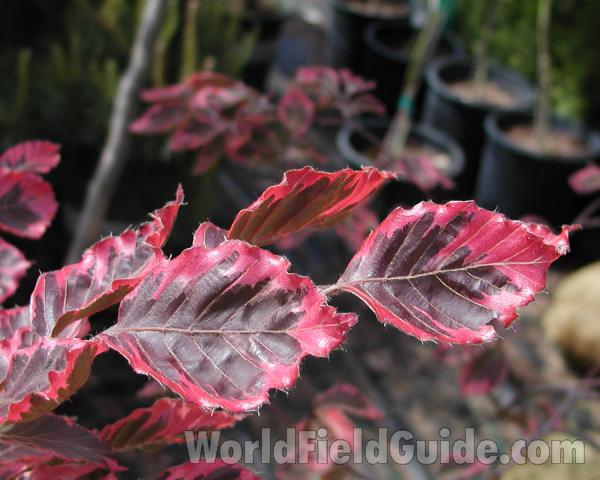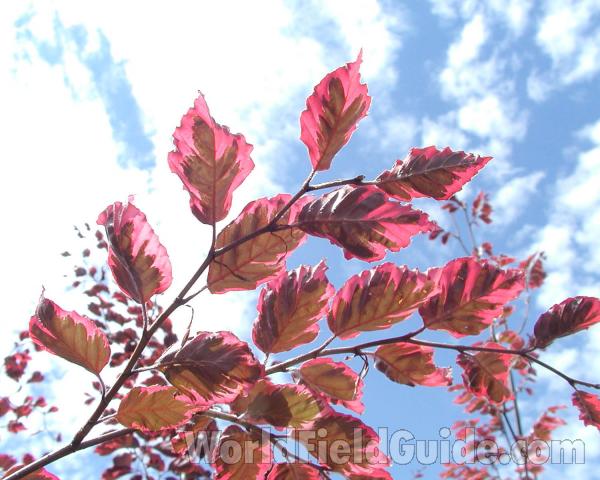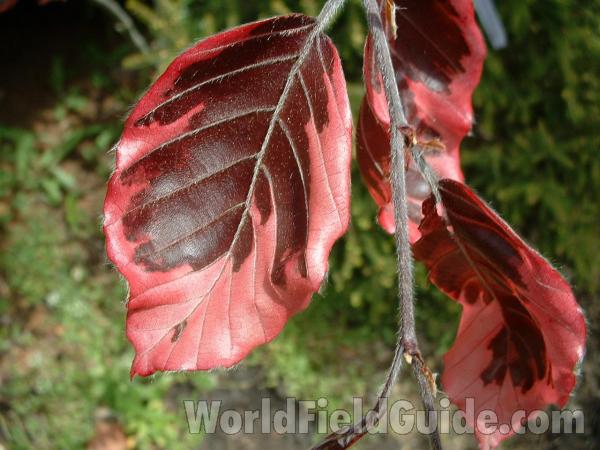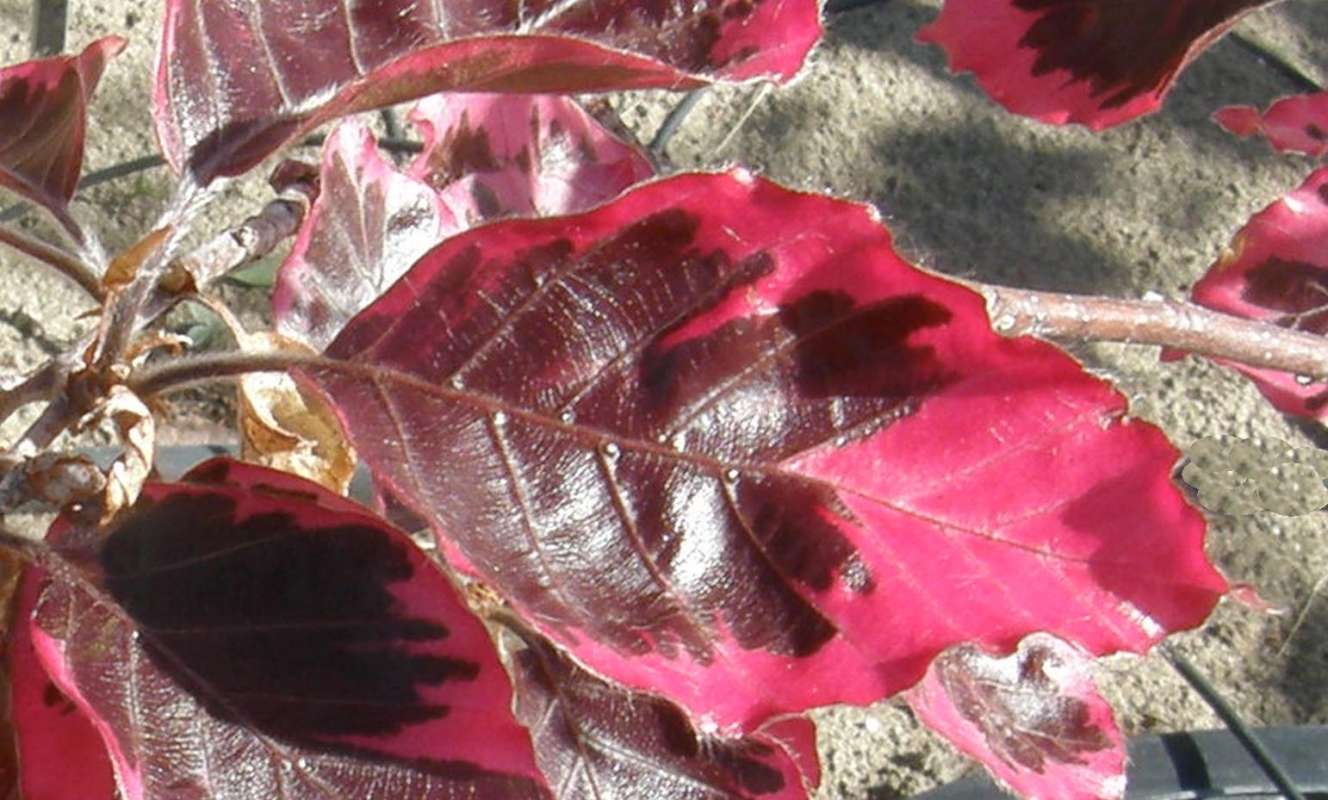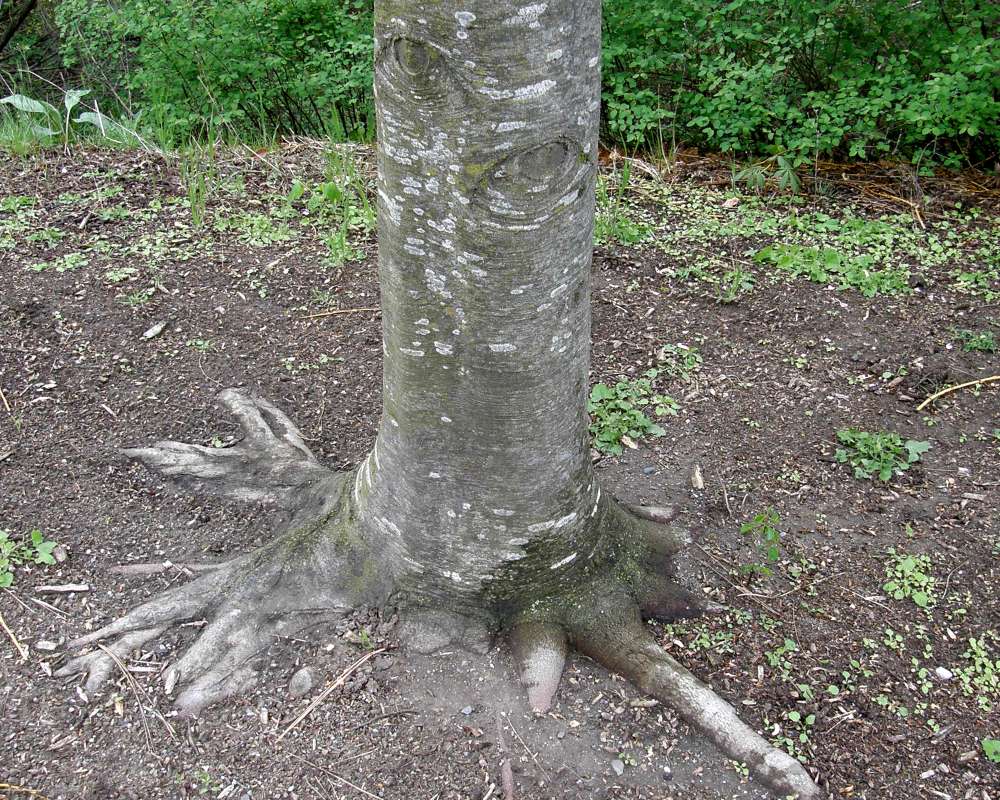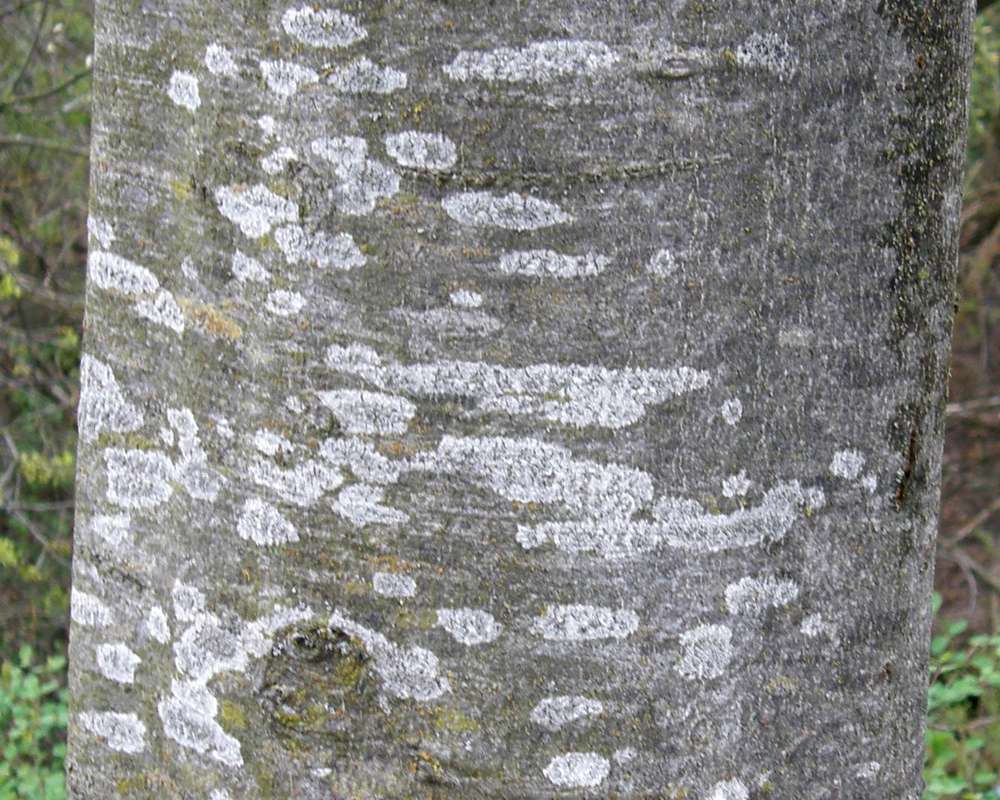SPECIES INFO
The beech genus (Fagus) is native to the northern Hemisphere. Britton and Brown in 1913 noted 4 species. A more recent count noted about 10 species. These are trees with smooth light grey bark. The leaves have straight veins. The alternate leaves can be entire or toothed.
Oak Family has been separated into several divisions based on both genus and geography to facilitate their study. This group contains the non-oaks of the oak family that are found in the Old World.
Beech group (Fagus) has about 7-8 representatives that are found in Eurasia.
F. crenata - Japan
F. engleriana - China
F. japonica - Japan
F. longipetiolata - China
F. lucida - China
F. orientalis - SE Europe to Iran
F. sylvatica - Europe to Caucasus
Tanbark Oak (Lithocarpus) has about five Eurasian species
L. cleistocarpus - China
L. edulis - Japan
L. glaber - Japan, China
L. henryi - China
L. pachyphpyllus - Himalayan area
Southern beech genus (Nothofagus)is found in both Old and New World.
Oak and Beech Family (Fagaceae) has about 600 species usually divided into about six different genera. The most common genus in North America is the Oak (Quercus) genus. This is a large and important genus that contains many valuable species of trees. To facilitate study of Quercus, the Oak and Beech Family have been divided into several different sections as follows:
Red Oaks of Eastern USA
White Oaks of Eastern USA
Oaks of West Texas
Oaks of SW USA (Arizona, New Mexico, Colorado, etc)
Oaks of Pacific Coast region (California, Oregon, etc.)
Hybrid Oaks.
Eurasian Species of Oaks
Non Oak Group - (N. American) - (Beeches, etc)
Eurasian Species of Non-Oaks and Chestnuts
Oak (Quercus) Miller and Lamb's book, Oaks of North America, published in l985, was used to develop a preliminary list of the oak (Quercus) species found in the United States. This list was modified by comparing it to A California Flora by Philip Munz and Arizona Flora by Kearney and Peebles. Recently, we have added species from Kartesz and Spellenberg.
Fagales Order is usually divided into two different families: the birches and the oaks.
Dicots (Dicotyledoneae Class) are the predominant group of vascular plants on earth. With the exception of the grasses (Monocots) and the Conifers (Gymnosperms), most of the larger plants that one encounters are Dicots. Dicots are characterized by having a seed with two outer shell coverings.
Some of the more primitive Dicots are the typical hardwood trees (oaks, birches, hickories, etc). The more advanced Dicots include many of the Composite (Aster) Family flowers like the Dandelion, Aster, Thistles, and Sunflowers. Although many Monocots reach a very high degree of specialization, most botanists feel that the Dicots represent the most advanced group of plants.
Seed plants (Phylum Embryophyta) are generally grouped into one large phylum containing three major classes: the Gymnosperms, the Monocots, and the Dicots. (Some scientists separate the Gymnosperms into a separate phylum and refer to the remaining plants as flowering plants or Angiospermae.)
For North American counts of the number of species in each genus and family, the primary reference has been John T. Kartesz, author of A Synonymized Checklist of the Vascular Flora of the United States, Canada, and Greenland (1994). The geographical scope of his lists include, as part of greater North America, Hawaii, Alaska, Greenland, Puerto Rico, and the Virgin Islands.
Kartesz lists 21,757 species of vascular plants comprising the ferns, gymnosperms and flowering plants as being found in greater North America (including Alaska, Hawaii, Greenland, Puerto Rico and the Virgin Islands.
There are estimates within the scientific world that about half of the listed North American seed plants were originally native with the balance being comprised of Eurasian and tropical plants that have become established.
Plant kingdom contains a large variety of different organisms including mosses, ferns, and seed plants. Most plants manufacture their energy from sunlight and water. Identification of many species is difficult in that most individual plants have characteristics that have variables based on soil moisture, soil chemistry, and sunlight.
Because of the difficulty in learning and identifying different plant groups, specialists have emerged that study only a limited group of plants. These specialists revise the taxonomy and give us detailed descriptions and ranges of the various species. Their results are published in technical journals and written with highly specialized words that apply to a specific group.
On the other hand, there are the nature publishers. These people and companies undertake the challenging task of trying to provide easy to use pictures and descriptions to identify those species.
